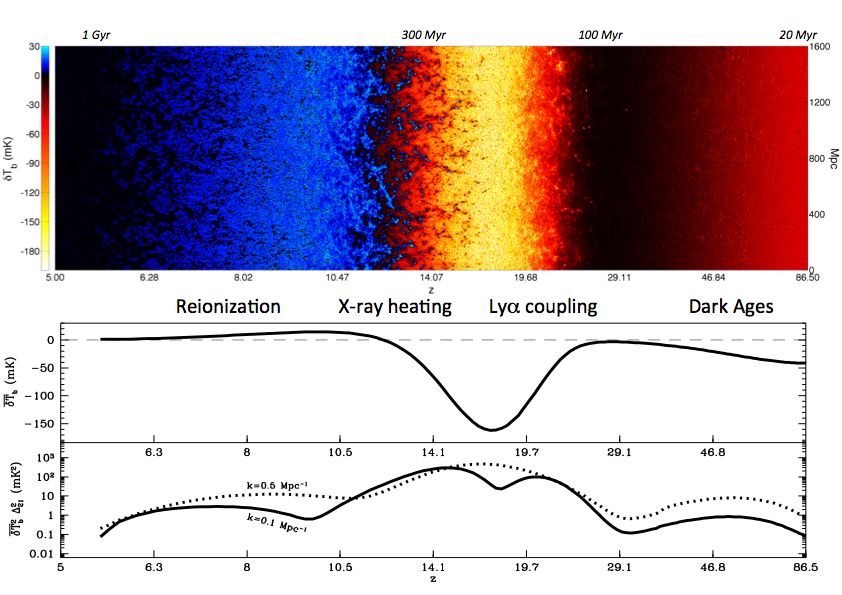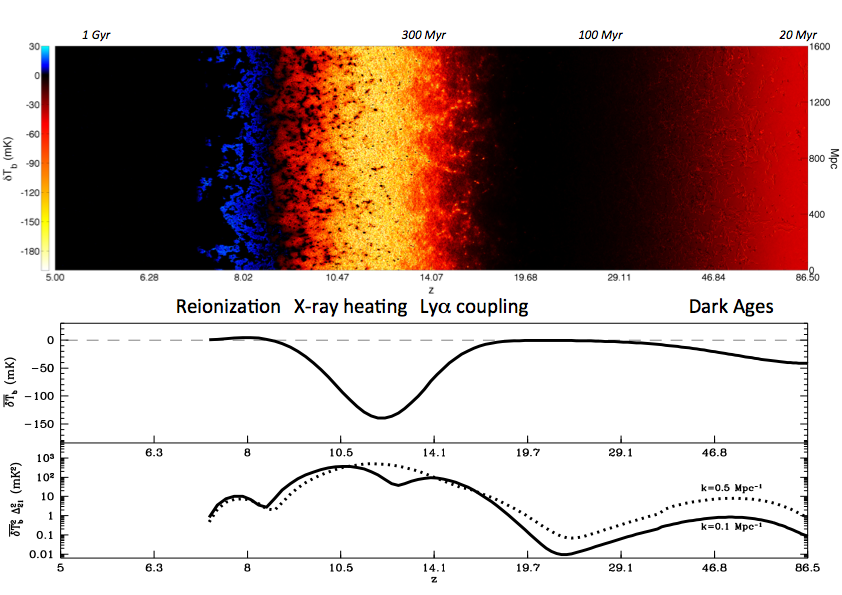

The redshifted 21cm line will allow us to see the infancy of our Universe with unmatched clarity. Interferometric observations will eventually provide a movie of the tempestuous first billion years of our Universe. We will witness the dawn of the first stars, galaxies and black holes.
This nascent field is rapidly advancing. To keep pace, we established the EOS project: providing periodic releases of the latest, cutting-edge 21cm simulations. New advances in our understanding can have dramatic implications (for example, recent work suggests that the reionization 21cm signal might be up to two or three times weaker than previously expected). Although we presently understand very little of the early Universe, regular EOS releases serve as an up-to-date “best-guess” for the cosmic 21cm signal. These could aid instrument designs, observing strategies, foreground cleaning algorithms, etc.
2016 data release
Description:
These simulations were generated with 21cmFASTv2. They are 1.6 Gpc on a side, with a resolution of 1024^3. The main physics improvements include inhomogeneous, sub-grid modeling of recombinations, as well as calibrated photo-heating feedback on star formation during reionization (for details see Sobacchi & Mesinger 2014). Cosmological parameters are taken from Planck2015. The initial stages of the Cosmic Dawn occur later than in some previous estimates, as we calibrate to recent Chandra observations, and we include a smaller star-formation efficiency (5%) motivated by the non-ionizing UV luminosity functions of high-z galaxies.
We include two extremes models, FAINT GALAXIES and BRIGHT GALAXIES, differing in the halo mass of the typical galaxies driving the EoR and CD. The ionizing efficiency (e.g. escape fraction) is tuned in both models to agree with Planck2015 measurements of the Thompson scattering optical depth. The resulting models bracket the expected typical sizes of ionized regions as well as the duration of reionization. However, we motivate the FAINT GALAXIES model as likely being closer to the “truth”. For a detailed description of the simulations, please see Mesinger, Greig, Sobacchi (2016).
Movies:
2D slice with power spectra evolution
Public data:
FAINT GALAXIES Power spectra (ascii files, columns: k, power, poisson error)
FAINT GALAXIES Data cubes (co-eval, and light-cone interpolated along the z-axis)
BRIGHT GALAXIES Power spectra (ascii files, with columns of k, power, poisson error)
BRIGHT GALAXIES Data cubes (co-eval, and light-cone interpolated along the z-axis)
Light-cone strips:
FAINT GALAXIES
BRIGHT GALAXIES


